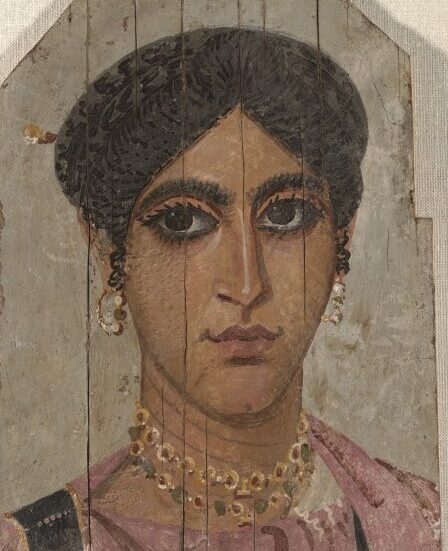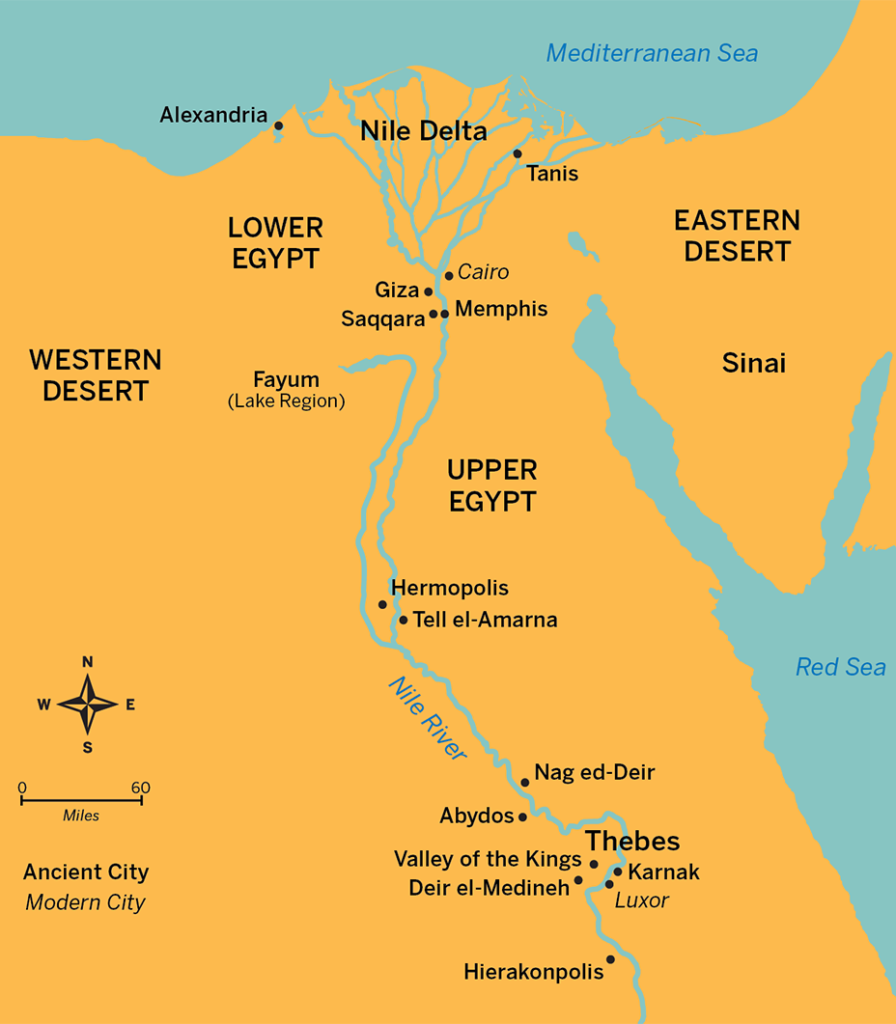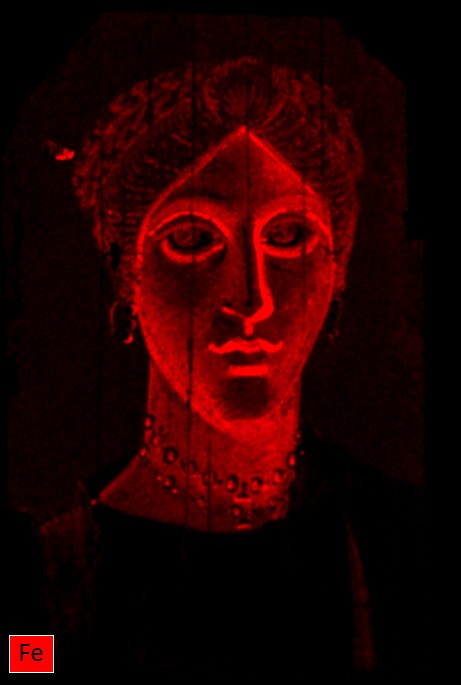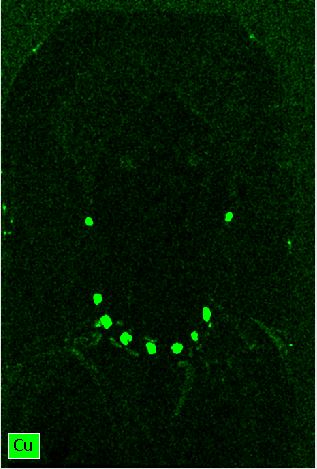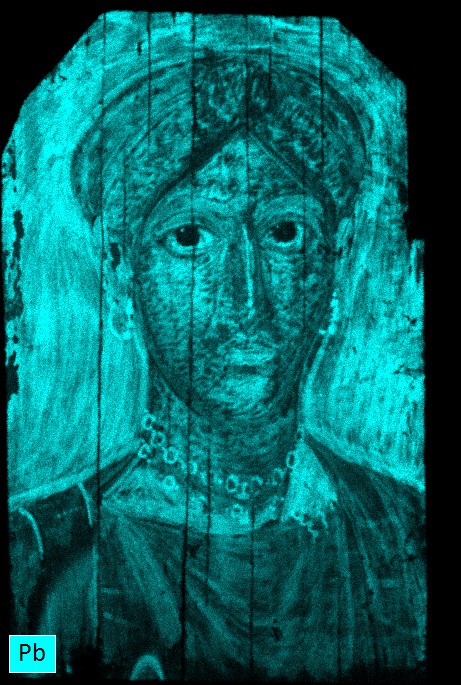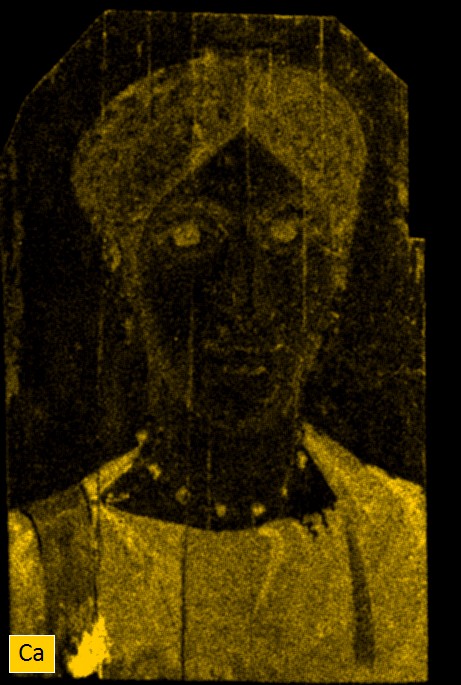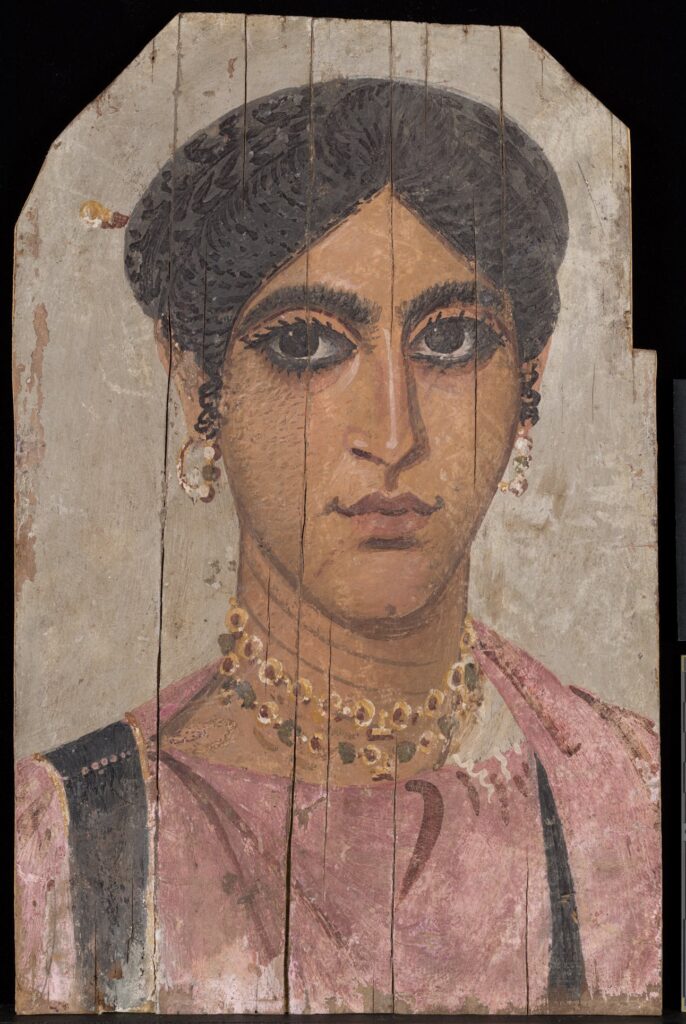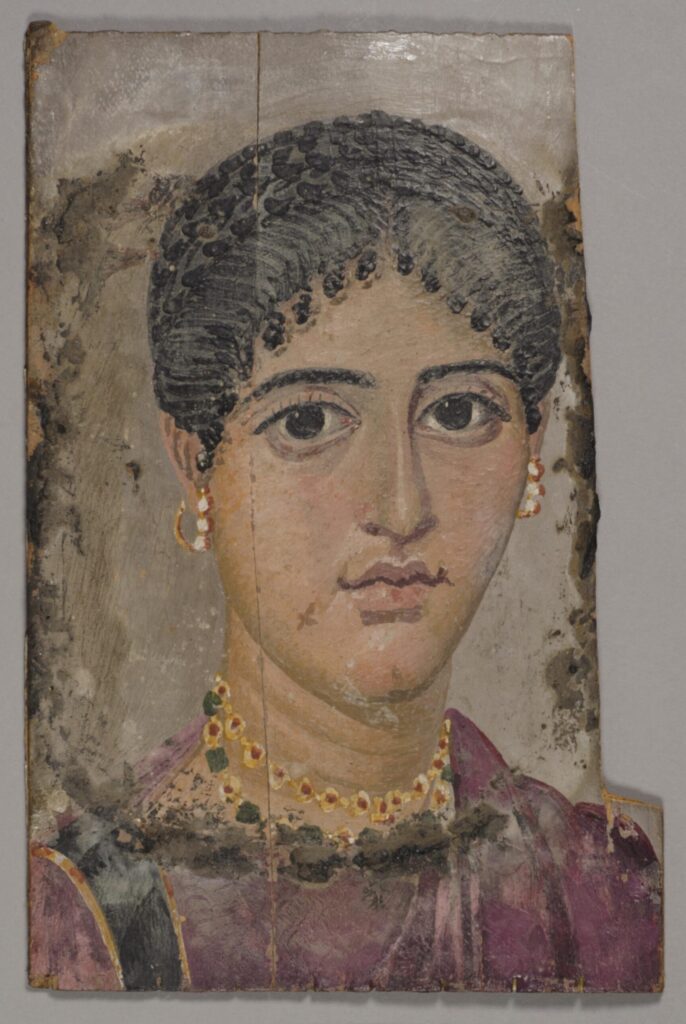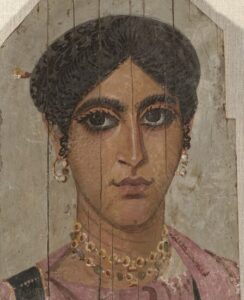
Conservation of Ancient Art
Learn more about the research and analysis of the Fayum Portrait of a Woman from VMFA’s Ancient Mediterranean Art Collection.
Overview
The Ancient Mediterranean Art Collection features the oldest objects in VMFA’s collection including ceramics, metalwork, stone sculpture, and examples of ancient wall and panel painting. Conservation of these objects can be a painstaking but incredibly rewarding process as the conservation treatment and analysis can reveal amazing new insights into the people who made and used them.
Due to their age, artifacts in the Ancient Art collection have potentially undergone an immense amount of change in their lifespan, collecting information and alterations not only from when they were made and used but also from burial, rediscovery, and past restorations. Conservators today can unlock this information through careful examination and analysis. However, they must also be careful not to alter these objects in a way that hinders future study and appreciation. Conservators are often required to undo old restorations that have aged poorly or that misrepresent an object’s original appearance. This process can add significantly to the amount of time needed to carefully clean, stabilize, and reconstruct these materials. That is one of the reasons why conservators today strive to use easily reversible conservation materials with thoroughly tested aging properties. Conservators also work closely with curators and specialists to ensure that they don’t misinterpret how an object would have originally appeared.
This resource will provide an overview of the discoveries made by conservators during their analysis and study of the Fayum Portrait of a Woman, providing new information on artistic techniques and connections to portraits in other museums.
The Object: Fayum Portrait of a Young Woman
This type of portrait painting, known as a Fayum painting, is named after the Fayum region in Egypt, where some of the first examples were found. Fayum portraits date to the first to third centuries AD, when Egypt was a province of the Roman Empire. Like funerary masks used earlier in Egypt, these portraits were placed over the faces of mummies, merging Egyptian funerary practices with Graeco-Roman portraiture. This example is painted in the encaustic technique, in which pigment was added to heated beeswax, possibly with other additives, and applied to a wooden panel.
Fayum portraits were incorporated into mummies and may have been created while the subject was still alive. While these portraits are often highly realistic looking, it is impossible to know if they accurately portray specific individuals. Nonetheless, the portraits give us a sense of what the inhabitants of ancient Egypt during this time may have looked and provides vital evidence for how subtly ancient artisans could manipulate color.
This portrait beautifully captures the luminous eyes of a Roman Egyptian woman, an appropriate emphasis since the eyes were considered windows to the next life. She wears a rose-colored dress and a mantle (a sleeveless garment worn over the shoulders) edged with a broad, dark stripe, all marks of a fashionably dressed upper-class woman in Roman Egypt. The subjects of Fayum portraits include Egyptians, Jews, Greeks, Romans, and Ethiopians, representing the diverse population typical of Roman Egypt. The portraits are a good example of how traditional Egyptian burial customs intersected with the traditions of Graeco-Roman portraiture.
THE STUDY: IMAGING AND ANALYSIS of the Fayum Portrait
VMFA’s Conservation Department used a wide range of analytic and technical imaging to study the portrait. Techniques included x-radiography, high resolution digital photography, and multi-band imaging, which utilizes distinct regions of the electromagnetic spectrum (particularly within the Ultraviolet and Infrared regions) to help distinguish and visualize different types of materials present in the painting. Elemental (Iron, Copper, Lead) analysis was also carried out using a scanning x-ray fluorescence spectrometer to visualize the distribution of elements making up the portrait.
Collaboration
This technical study was a collaboration between objects conservators and paintings conservators at VMFA and at the Denver Museum of Nature and Science. For historical information and cultural background on the VMFA’s portrait, the team consulted with VMFA’s curator of Ancient Art. Pooling their specialized knowledge about materials and analysis techniques, the conservators working on this study also joined APPEAR, a project organized by the J. Paul Getty Museum to facilitate collaborative research on ancient panel-painting production.
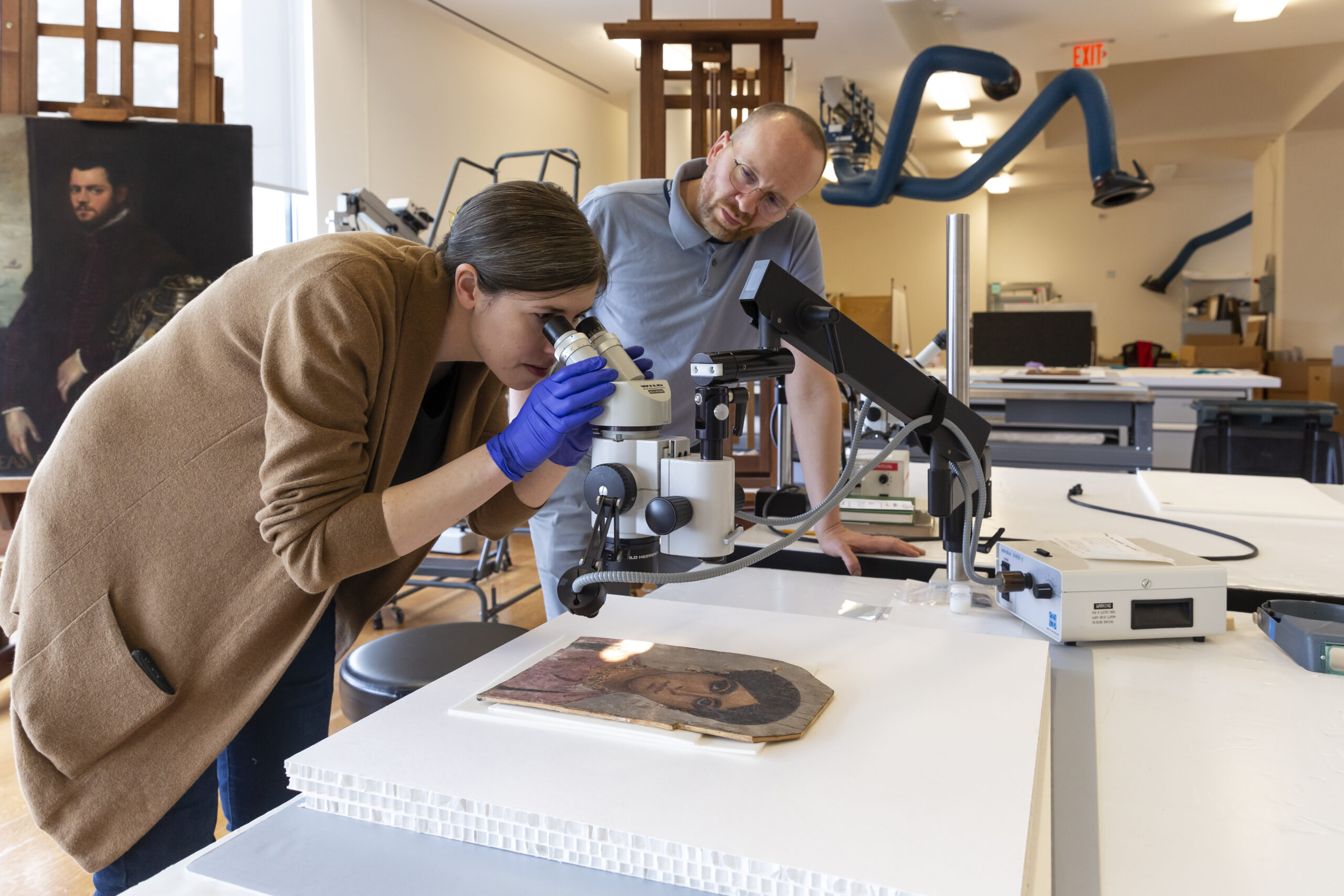
Imaging
High resolution imaging can provide conservators with a lot of information on how an object was made and what materials were used. For example, photography using unidirectional light (raking light), can help visualize surface texture, thus revealing the types of tools that were used to apply the paint. In this instance, the toolmarks indicate a brush was used to apply the gray background while the texture in the face is more typical of encaustic that has been applied with a spatula-like metal tipped tool such as a cauterium.
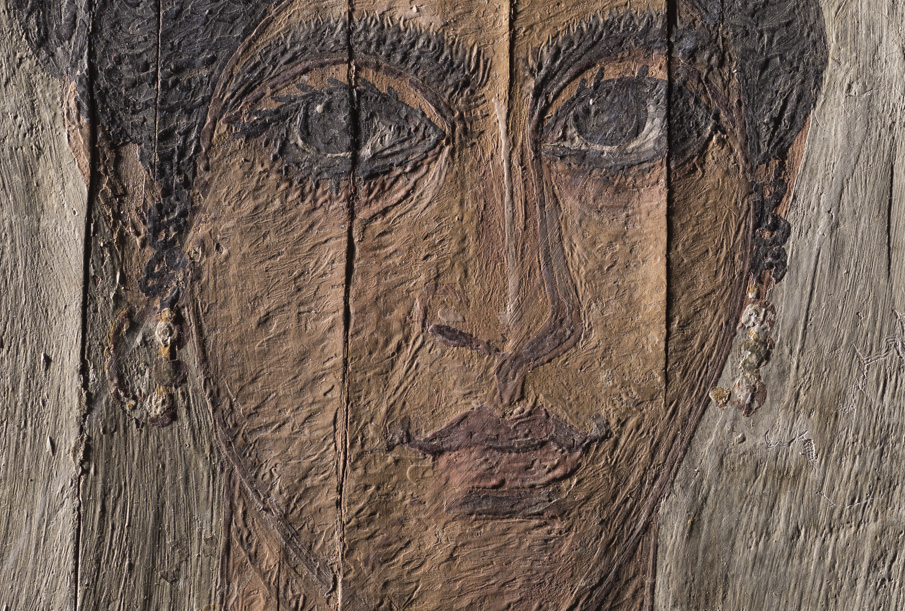
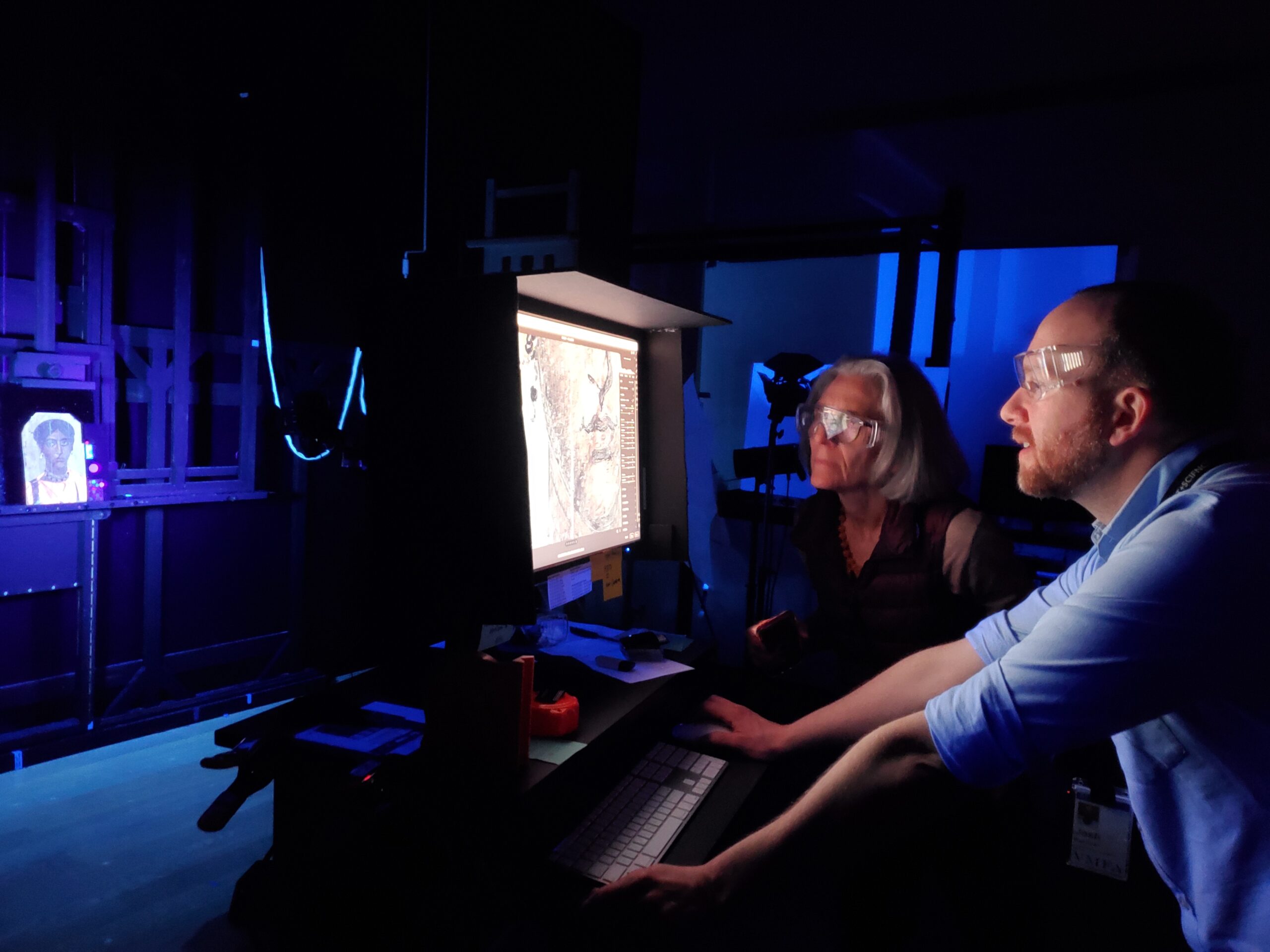
Examination under ultraviolet light can also reveal information about the materials present through the characteristic colors of fluorescence in the visible range of light. For example, the fluorescence of the woman’s garment in the VMFA portrait is characteristic of madder lake, a plant that produces a pink to reddish pigment commonly used as a colorant in funerary portraits in the Roman period. The bluish-white fluorescence on the clavus near the lower left edge and along the cracks in the panel are more indicative of areas of modern restoration materials.
Slide to see the Fayum Portrait under Ultraviolet-induced visible fluorescence (UVF)!
Another type of imaging that uses a different region of the electromagnetic spectrum is x-radiography. The x-ray images of the portrait help us see through the painting, highlighting areas of greater density, which appear whiter in the resulting radiograph. In the case of this portrait, the lighter areas primarily correspond with areas of lead-based pigments, such as lead white (basic lead carbonate), which is more radiopaque than materials made up of lighter elements.
Slide to see the Fayum Portrait under X-Radiography!
Scanning XRF
Scanning x-ray fluorescence spectroscopy is an analytical method that can produce elemental maps of a flat surface. It is especially useful for identifying pigments. The map of the VMFA’s Fayum portrait reveals the use of iron-based pigments (iron oxides) to produce the skin tones in the face, the red stones in the necklace and earrings, and details in her hair. The elemental map of copper indicates the use of copper-based green pigment primarily in the areas of the greenish colored beads, likely emeralds, making up the necklace and earrings.
- Iron
- Copper
- Lead
- Calcium
Discoveries
A Matching Portrait
By joining the APPEAR project, the VMFA team gained access to the APPEAR database of images and analytical results from 392 ancient panel paintings contributed by 57 different institutions around the world. Searching the database for the same features found on the VMFA’s portrait, the team found a portrait in the collection of the University of Pennsylvania Museum of Archaeology and Anthropology, now called The Penn Museum, (#E16214) that matched closely in terms of materials, technique, and style.
The Penn Museum portrait, seen at right, which was excavated from the same site as VMFA’s, Er-Rubaiyat, was also painted using the same apparent techniques and sequence. In addition to wearing nearly identical jewelry and clothing, each sitter’s image appears to have been painted with similar materials, using the same techniques. The green beads on the jewelry in the Penn portrait appear a more vibrant green than the beads in the VMFA’s portrait, suggesting the paint in the VMFA portrait has undergone greater discoloration over time. Despite the differences in how these two portraits have aged, their many shared characteristics suggest both paintings were possibly made by the same artist.
An Updated Date
When it entered VMFA’s collection in 1955, the portrait was tentatively dated to the late 3rd– 4th century but it was likely created much earlier, in the 2nd century. Ancient portraits are commonly dated through the sitter’s hairstyle, and this woman wears a style that was fashionable during the Antonine period (138-161) with coiled braids on top of the head and curls at the side. The black and gold clavi (vertical bands) on the woman’s pink garment were also popular during this period. The Penn Museum’s portrait is dated to the 2nd century, based on the woman’s hairstyle, thus providing additional support for the updated dating of VMFA’s portrait due to the similarity between the two and likelihood that they were both painted by the same artist.
Conclusions & Future Analysis
Initial research of the VMFA’s Fayum Portrait of a Woman has already contributed greatly to our understanding of the artists’ materials and techniques and has allowed us to date the portrait more accurately to the 2nd century. Further analysis and research are planned to help identify the wood and further characterize the binder, with the goal of sharing all the imaging and results in the APPEAR database for future comparative studies. The discovery of a similar portrait in the Penn Museum collection, which appears to have been painted by the same artist, may provide an opportunity to further explore the practices of portraitists and their clients within this region and time period.





